Amphisarca Lists
-
Cultivation techniques of potted apple
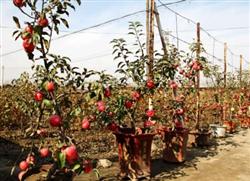
Apple potted plant is a new thing, and its emergence has been welcomed and valued by leisure agriculture, urban agriculture, sightseeing tourism and landscaping. Its development and popularity is a symbol of the improvement of social economy and people's living standards in our country. It is also a close-up of the pursuit of the beauty of life and environment. A rural courtyard, front of a house.
2018-09-16 -
Old apple tree grafted begonia
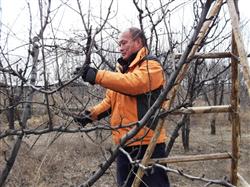
In recent years, with the increasing demand for large-size begonia in greening projects, large-size begonia is obviously not enough in greening nurseries, such as Xifu begonia and royal begonia, which are widely used in various places. Apple trees of the same family and genus as begonia are used as rootstocks for grafted begonia. After the peak period of fruit production in the orchard.
2018-09-16 -
Cultivation and Management of Dragon Fruit
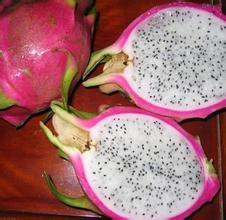
According to the difference of specific varieties, dragon fruit is a plant of Hylocereusundatus and SeleniereusMeja-lantous of cactus family, native to Costa rica, Panama, Ecuador, Cuba and Colombia in Central and South America, and Vietnam in Southeast Asia.
2018-09-16 -
How to make young apple trees bear fruit early
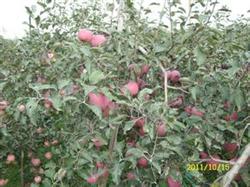
In the current production, some orchards, soil conditions are better, fertilizer and water are more sufficient, but the planting density is too large, and the management after planting cannot keep up, especially the correct use of pruning techniques to promote early flowering results, resulting in over-dense populations, coverage rates of 90%, or even 110%, crown handover rates greater than 20%, and mu branches.
2018-09-16 -
Dry cultivation Model of Apple-Alfalfa in Hilly Dryland
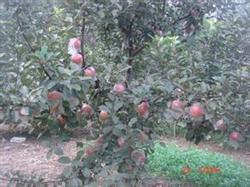
In order to make young apple trees bear fruit earlier, the following technical measures should be taken on the basis of strengthening fertilizer and water management. In spring (early March), the buds on the branches are carved and pulled back and forth close to the tip of the bud with a hacksaw blade, reaching the xylem with a width slightly wider than the bud. By carving the bud, the germination rate can reach 85%.
2018-09-16 -
The time and method of Apple bagging
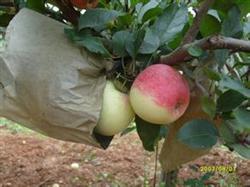
Bagging time except for apple varieties which are prone to fruit rust, early and medium-maturing apple varieties are usually bagged about 30 days after falling flowers, and mid-late and late-maturing apple varieties are bagged 35-45 days after falling flowers. Bagging prematurely, although the apple fruit surface is more smooth when harvested, but because the young fruit stalk is delicate, the fruit will meet the windy weather.
2018-09-16 -
Fertilization techniques of Big Cherry
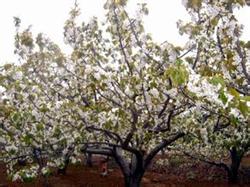
The main fertilization techniques and methods of big cherry are as follows: first, fertilization technology 1. The application of base fertilizer in autumn is generally carried out in late August. The application of base fertilizer in autumn is the peak of root growth in autumn, which is beneficial to the absorption of nutrients.
2018-09-16 -
Post-harvest management of big cherry
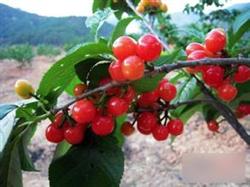
The technical management of sweet cherry trees after fruit harvest is very important, because at this time, the tree consumes a lot of nutrients stored in the tree through the early process of leaf expansion, shoot tapping, flowering, fruit setting to fruit growth and development, and enters the nutrition accumulation stage of photosynthesis after fruit harvest. The output was well managed during this period. Its technology.
2018-09-16 -
Humidity Control Technology of Cherry in greenhouse
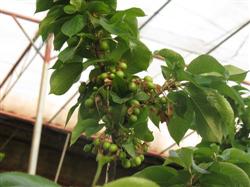
From mulching to harvesting, the soil relative humidity is required to be 60% Mel 80%, and 80% is required from pre-germination to early flowering. During the germination period, the soil moisture of 20-40 cm is dispersed according to the clump of the soil. After flowering, the soil relative humidity should be 60% and 70% of the relative humidity. Air humidity, maintenance phase from covered shed to germination period.
2018-09-16 -
Culture technique of big cherry in greenhouse
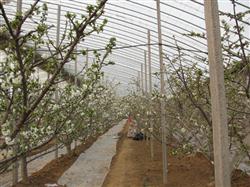
First, variety selection and setting equipment equipment 1, the main varieties. Mainly precocious red varieties. At present, the better varieties are: red light, Italian early red, Ukrainian cherry and so on. For rich pollination varieties, improve fruit setting rate and delay supply period, can be properly matched with high-quality varieties such as Sato Kam, Renny, Pioneer.
2018-09-16 -
Grafting culture technique of dwarf cherry
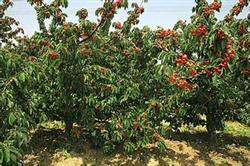
Cherry trees are tall and are not suitable for growing in greenhouses; natural production takes 5 to 6 years to bear fruit, and it takes 10 years to enter the high yield period, with a long investment return period and high management costs. After years of exploration, fruit tree experts in China have developed a variety of cherry grafted with cherry as rootstock and FL-80 plum as interstock.
2018-09-16 -
Management measures of big cherry trees for 1-3 years
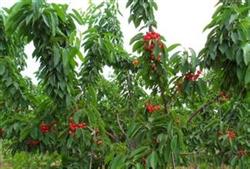
The root distribution of big cherry trees is relatively shallow, and the root distribution of young trees in 1-3 years is shallower, usually about 5-40 cm. In winter, the permafrost is 40 to 60 centimeters deep, and the whole root system of the tree is in the permafrost. The above-ground temperature in Beijing rises fast and high in early spring, with temperatures as high as 2 in mid-late March.
2018-09-16 -
Development potential and cultivation advantages of Dragon Fruit
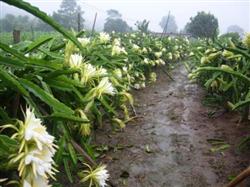
Pitaya is a plant of the genus Cactus, which is native to the tropical desert of Central America and is a typical tropical plant. Also known as Qinglongguo and Honglongguo, it was introduced from Nanyang to Taiwan and then improved by Taiwan to our Xianju Farm. The dragon fruit is named because its fleshy scales look like Jiaolong Wailin. She is smooth and clean.
2018-09-16 -
Key points for summer shearing of cherry trees
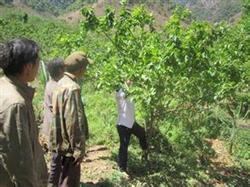
In order to promote flower bud differentiation and prevent excessive vegetative growth, new shoot coring should be controlled. That is, to pick the coring of the new shoots that have not stopped growing, the position of the coring usually takes the half-leaf as the boundary; after the coring stops for 10-15 days, the second shoot will be sent out, and the second coring will be carried out when it grows to 15-20 cm.
2018-09-16 -
In what climate should western cherries be cultivated?
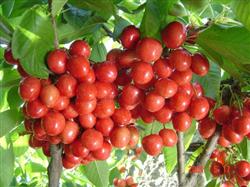
Western cherry (also known as big cherry) has not been introduced into China for only one hundred years. Cultivation is concentrated in the provinces along the coast of Bohai Bay, among which Shandong Province is the most. In recent years, many places have also been introduced and cultivated. However, they all show strong tree growth, long branches, few flower buds, serious falling flowers and fruits.
2018-09-16 -
Early, high-yield and efficient cultivation of sweet cherry
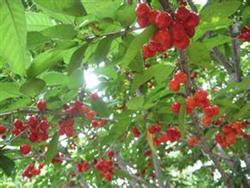
1. According to the characteristics of drought tolerance, non-waterlogging resistance, cold resistance, salt-alkali resistance and shallow root system of sweet cherry, sweet cherry orchard should be located in loam or sandy loam with deep soil layer, loose soil, low groundwater level, no stagnant water, good drainage and irrigation conditions and not easy to suffer wind damage. When the water table is high and soil.
2018-09-16 -
High-yield and efficient cultivation techniques of Sweet Cherry
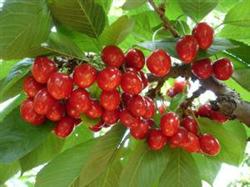
Jinzhou District is located in the southern tip of Liaodong Peninsula, with an annual average temperature of 10 ℃, annual sunshine of 2505.5 h, annual precipitation of 500-700mm, and a frost-free period of about 180 days. Many hills and hills, loose soil, moderate permeability, suitable for the growth and development of sweet cherry, cultivation has a long history. But before 1998, due to a single variety, technology.
2018-09-16 -
How to manage and protect young cherry trees in autumn and winter
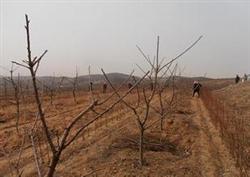
1. Autumn management. 1. Sparse planting. Sweet cherry is a light-loving tree species. In order to ensure the ventilation and transparency of the whole tree, the door branches that are close to the main branches that cannot be covered with space on some overlapping main branches or main branches should be removed as soon as possible, and the erect and lateral branches on the main branches that can not occupy full space should be properly cut short to promote the formation of new branches.
2018-09-16 -
What pesticides are needed to control cherry diseases and insect pests
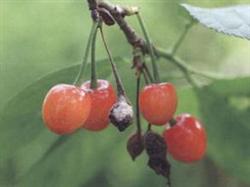
Cherry planting process is often affected by diseases and insect pests, how to correctly control diseases and insect pests is very important for planting income, below we will cherry pest control corresponding pesticide introduction, for farmers' reference. 1. Cherry main diseases control corresponding pesticides: 1.1 control of bacterial perforation disease.
2018-09-16 -
Cultivation techniques of watermelon hanging vine in solar greenhouse
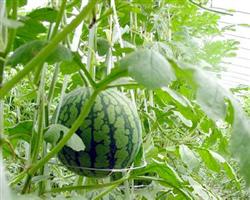
The cultivation season is in the early spring. The seedlings were sowed and raised in the middle and last ten days of February, the seedling age was 35 to 40 days, the seedlings were raised by heating, planted in the greenhouse in the first and middle of April, and listed in early June. The cultivation is postponed in autumn. The seeds were sown in late July and the seedling age was about 20 days. Cover greenhouse film in early September, cover thermal insulation grass curtain in late September, and appear on the market around October. Planted in winter and spring.
2018-09-16
